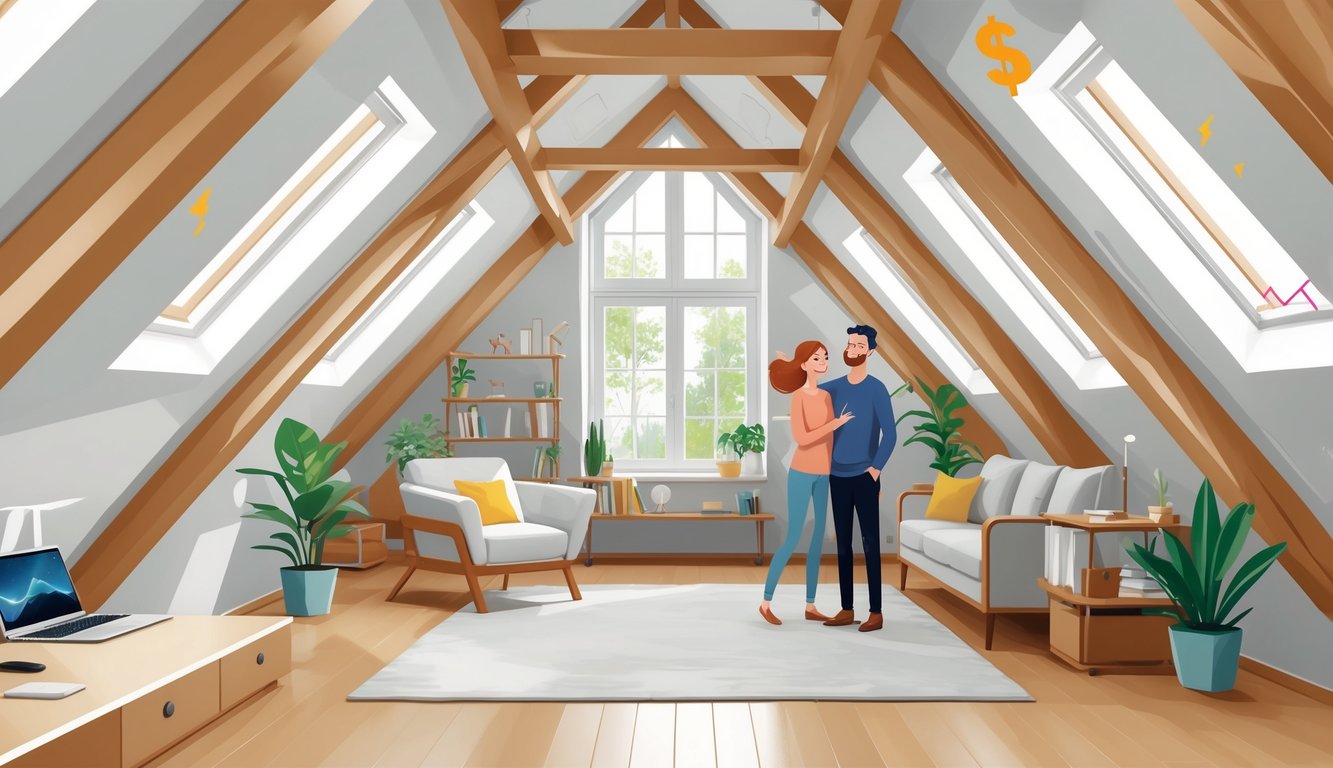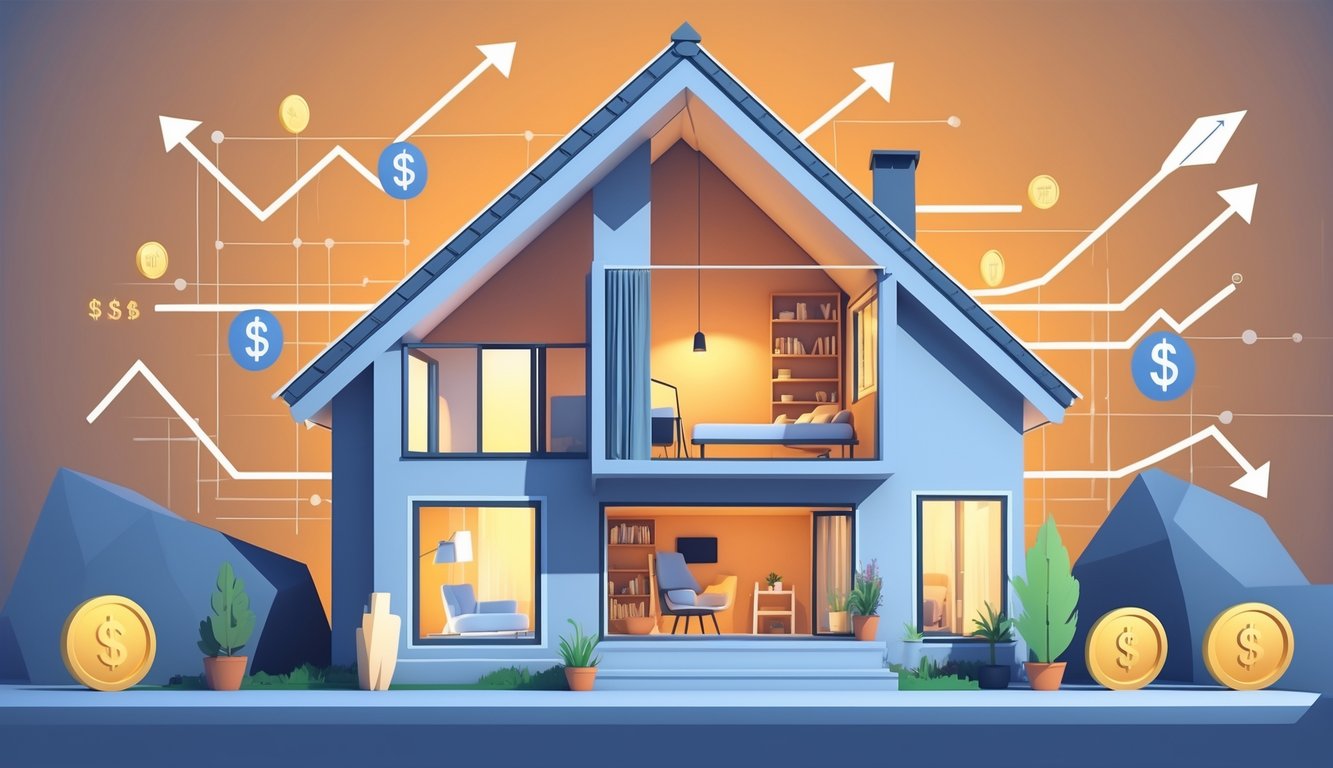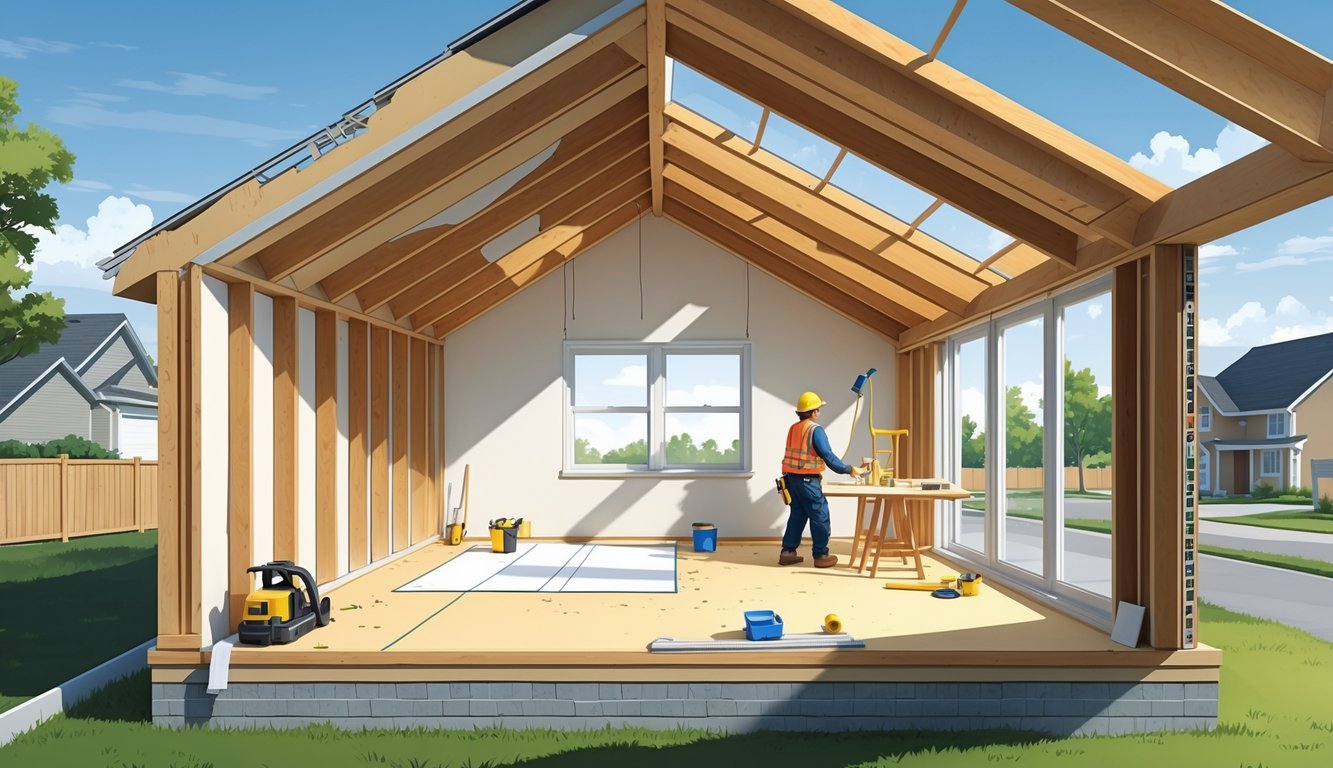
Look, I never thought I’d say this, but apparently the best return on a remodel comes from—wait for it—the attic. Yeah, that weird, cobwebby space above the bedrooms where you store old Halloween costumes and, if you’re me, an embarrassing number of empty moving boxes. I mean, who even goes up there except to chase out squirrels? But then I started poking around some recent stats (I’ll drop the link because I’m not making this up: https://dreamhomeprescott.com/2025/05/08/home-renovations) and, well, turns out attic conversions can pay back 60–65% of what you spend. That’s not just theory—people actually get that. I guess it’s not about adding square footage for the sake of it, but more like, suddenly you’ve got a real home office or guest room that doesn’t involve a futon in the laundry closet. Who decided attics should just be dead space anyway? Honestly, the original builders must’ve been allergic to storage solutions.
My contractor keeps insisting that finished attics get buyers way more excited than, like, a fancy bathroom tile nobody actually notices. Every real estate podcast I half-listen to while folding laundry suddenly shouts about attic conversions like they’re some secret hack for people who can’t stomach a full addition. And, unless you’re living in a haunted Victorian, it’s way less disruptive than gutting your kitchen and way less expensive than adding to the house’s footprint (and you sidestep the city’s nightmare zoning rules). I guess my neighbor’s “attic gym” counts, even though he can’t stand up straight in there and mostly just stores broken treadmills. Still, it’s technically a conversion.
People keep asking if finishing an attic sends their energy bills through the roof (ha), but honestly, it’s usually the opposite. Throw in some legit insulation, maybe a fan, and you’re actually saving on heating and cooling—at least that’s what this article says (https://primmart.com/attic-renovations-that-give-you-a-big-return-on-investment/). Not what I expected when I first started thinking about tossing out those ancient Christmas lights, but, well, the math works. My dog loves the new stairs, by the way. He tears up there every morning even though it’s just beanbags and a printer. Dogs are weird.
Why Attic Conversions Offer the Fastest Payback

Doesn’t it seem like every home project just snowballs? I start out thinking, “This is the upgrade that’ll finally pay off!” and somehow end up repainting the pantry. Attic conversions, though, the numbers are actually impressive—like, not just a lucky fluke for people on HGTV.
Return on Investment Compared to Other Remodels
I always assumed kitchens would win the ROI thing—open concept, granite, whatever. But the Remodeling Magazine Cost vs. Value report? It’s kind of brutal. Attic conversions usually pull in 56–75% ROI depending on where you live, which trounces most kitchen remodels. It’s honestly kind of wild.
You don’t need to mess with foundations, and the bones are already up there. My friend in real estate appraisals ranted for ages about how attic remodels beat bump-outs or basement redos for payback. When you stack up the costs—permits, materials, labor—it’s just so much less hassle than digging a giant hole in your yard. To sum up: kitchen reno = wallet pain, little instant boost; attic conversion = pretty fast value, less chaos.
Property Value Enhancement
Here’s what bugs me: People drop thousands on fancy faucets or imported tile and then act shocked when the house doesn’t appraise higher. But add actual, usable space above grade with an attic conversion? Suddenly the “theoretical” value is real, and the listing price jumps. Bedroom count goes up. I see listings with finished attics and, every time, the price is way above average for the square footage.
My neighbor put in a code-compliant attic bedroom last year. Their home value—no joke—jumped like 20% after the sale, according to this attic conversion market breakdown. Agents told me buyers care more about a finished attic with real windows and heat than some high-end kitchen in a tiny house. It’s weird but true: you turn a dusty, ignored space into money people actually notice.
Livable Space vs. Cost
Here’s where I get stuck—everyone wants more space, but nobody really talks about what’s worth finishing. Attic remodels seem intimidating, but they’re mostly insulation, some floor reinforcement, drywall, maybe a dormer if you’re feeling fancy. Compared to digging out a basement or giving up half your backyard for an addition? The per-square-foot cost just isn’t even close.
My contractor friend (the one who never stops talking) says even tricky attic conversions cost less per square foot than building new space at ground level. The attic’s there already; you’re just making it useful. This attic expansion summary basically says you get instant square footage without all the foundation drama. Sure, dormers or HVAC can complicate things, but you avoid months of digging and mud. Plus, you’re not fighting with weird soil or drainage issues, just regular old building codes. It’s a faster, usually cheaper way to get more value.
Also, fewer ants. Nobody ever mentions that, but I will.
Planning Your Attic Conversion

Nothing ever goes according to plan. The second I decided to turn my attic into a real room, a million little headaches—weight limits, surprise expenses, city rules—came out of nowhere. No way I’m pretending it’s all easy, so here’s how I tried (and mostly failed) to keep my sanity.
Initial Assessment and Feasibility
When I finally dragged myself up there—dodging a suitcase I swear I’ve never seen before—I realized most people forget you actually need a structural assessment. Not just “will my Peloton fit?” but “will the floor collapse if I put a bed up here?” My contractor, quoting the International Residential Code and rolling his eyes, said I needed at least 7 feet of ceiling almost everywhere, so all my dreams of a yoga studio died fast.
One look at attic sizing rules and you’ll see how quickly plans get crushed. No plumbing, low headroom, ancient knob-and-tube wiring—these aren’t just little annoyances, they can double your costs. And the HVAC? Mine was a joke, so I tried to get by with a portable AC. Now I regret it every single summer.
Budgeting and Cost Breakdown
Spreadsheets and surprise bills—my least favorite combo. Supposedly, “basic” attic conversions run $30,000 to $60,000 if you’re disciplined. But who’s disciplined? The minute you want a dormer or built-ins or a bathroom, the price jumps. My friend blew past $85,000 after falling in love with some Pinterest photo.
Costs sneak up: design fees, insulation that actually meets code, egress windows, rewiring, all the little stuff. The shock of seeing how the vision impacts the price is real. I started with a $40k dream and somehow landed at $62k, and no app on earth could make that feel better.
Permits and Planning Permission
I almost skipped the permit, honestly, until the town inspector told me his horror story—fines, forced demo, threats of liens. Turns out you need floorplans, structural details, sometimes even an engineer’s letter if your house is old. And then you wait for the zoning board, which apparently meets once every ice age. You’ll still need permits for electrical, insulation, even window swaps.
Planning permission is a mess depending on your neighborhood—ask local contractors who’ve done this or you might get forced to rip everything out. Not just paperwork. If your home’s historic or you’re in a cranky HOA, brace yourself for endless debates about rooflines and stairs while your patience (and bank account) dries up.